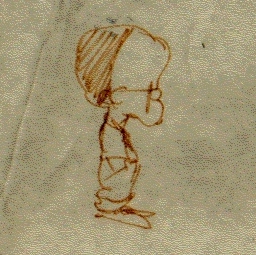- Blog/
The Scoobies’ Journey
For a while, I’ve been hearing a lot of references to the Hero’s Journey, a “pattern” for structuring stories in movies and games, based on the work by Joseph Campbell. But as I currently plow through three seasons of Roswell before my free month of Amazon Prime runs out, I realize that my favorite stories are group stories — Roswell, Deadwood, Battlestar Galactica (the new one), Sarah Connor Chronicles, Buffy, Angel, Firefly (those are just my all-time favorites — you could throw in Lost and some of the modern Star Treks)
You could argue that each story has a Hero — obvious by the titles in Buffy and Angel — but it’s hard to pick a particular one in the others, and even in Buffy and Angel, I’m often more interested in the other characters, who have their own story arcs and sometimes even their own episodes (evil Willow, Xander plays hero for a day, Cordelia’s it’s-a-wonderful-life episode). In a popularity contest, Spike might win in both series.
And it’s a stretch to say they’re all following their own Hero’s Journey — what makes the whole thing interesting is how they’re all different and join the group in different ways — typically someone is chosen or appointed to the challenge, some are trusted friends and followers, some are drawn in by lust or love, some are in it for selfish reasons. Part of the story is just seeing who earns or stumbles their way into the group and who falls out, sometimes to fall back in, later. Like a family (in that sense, these characteres are more like Norm in Cheers than Ulysses in Greek mythology). And as if just to make you realize how vested you are in all the characters, one may be suddenly removed from you, never to return (notwithstanding Cylons, time travel, and ghosts).
Joss Whedon is the grandmaster of assembling these scooby gangs (as the Buffy crew self-consciously labels itself), but he did have one series that just didn’t do it for me, Dollhouse. And that provides some clues as to what’s required in the scooby formula. Dollhouse had the group, sure, but it was too much about Eliza Dushku’s character (like in a regular series), and for the most part the characters didn’t like each other, were unlikable, or blank personalities performing as indentured servants (like in a regular job). And the grimness of the show’s premise wasn’t lightened by Whedon’s trademark humor. For that to work, I think you have to actually like the characters.
However, I enjoyed the second season a lot more. By then, the dolls developed real personalities, interpersonal relationships, they collaborated against a common enemy, and somehow the whole thing was funnier. Maybe this is why I can’t think of great scooby stories in other media (except perhaps The Wild Bunch). These stories need time.

